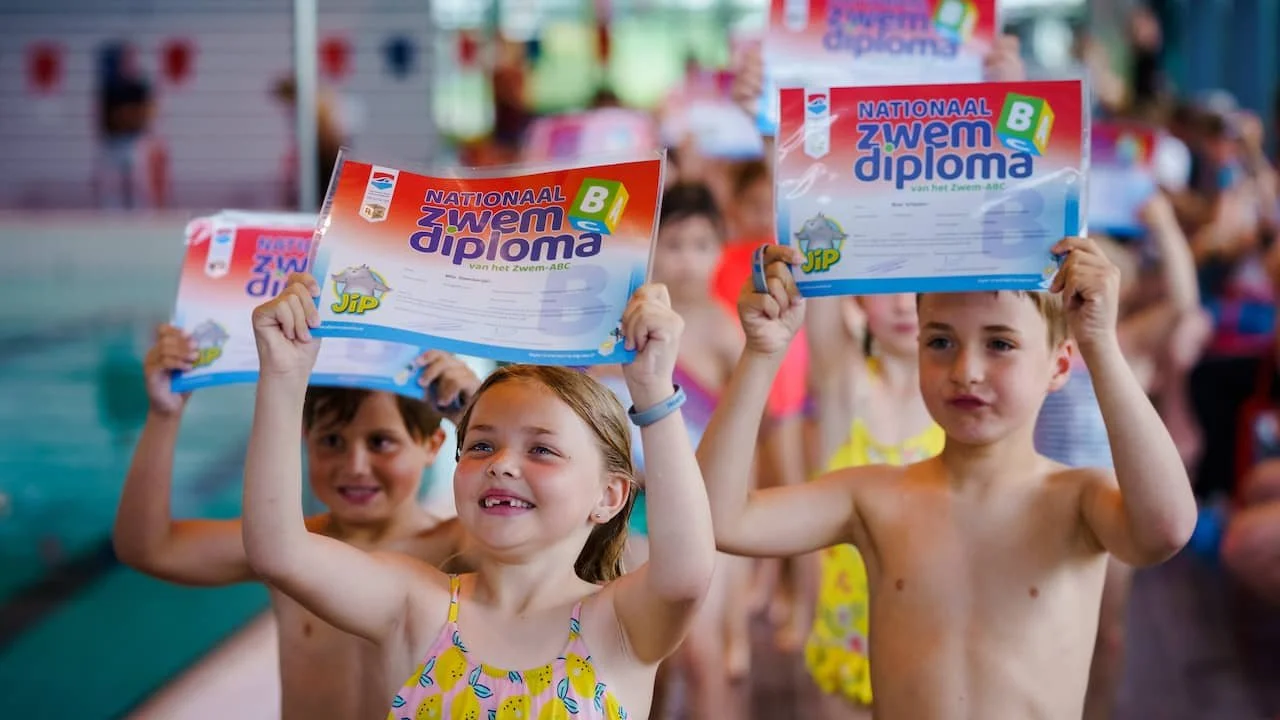Expat Chronicles: Dutch High School
Summer 2019 my family of five made what we hope is a permanent move from the United States to The Netherlands. By October of 2020, both of my teenage children were enrolled in a normal, public Dutch high school. Their transition from non-Dutch speakers to fluent speakers was made possible thanks to the publicly funded Dutch schools for language transition, which I described last year.
Learning Dutch proved easier for Aria and Liam than we expected, but how would they fare in regular Dutch high school?
In The Netherlands, schools are open, schedules are individualized and students specialize at an early age in view of their future career. Here’s what we’ve experienced so far in Dutch secondary school.
Tracks
via Wikipedia
Dutch high school is a complex world with many different tracks or school types. At the end of elementary school children are assigned a track, depending upon their ability. This path is ultimately flexible because it is possible to work up to a higher track or move down, as needed.
You could say that these tracks are like “honors” or “AP” in the USA. That is not quite right, but there are some correlations. The three main tracks are VMBO, HAVO and VWO. If you are in HAVO, all of your classes are at HAVO level, and when you graduate you have the right to certain continuing education and careers at HAVO level.
The tracks also differ in length. VMBO Is a 4 year track, HAVO is 5 years, and VWO is 6 years. Thus a child in an easier track will graduate from high school sooner. However, their continuing education program may be longer, so it can all even out. For example, a HAVO graduate goes to a 4-year college program; while, a VWO student goes to a 3-year university program.
My eldest, Aria, is in the VWO track. Liam’s track is undecided, as he’s currently in a HAVO/VWO blended program. They will confirm his track at the end of this school year.
Profiles
Dutch high schools seem to favor specialization. The tracks allow students to focus on material relevant to them. Things get even more targeted when students choose a profile. A profile is like a college major. It’s much more broad, but like a major it reflects the students career interests. Students choose this profile halfway through their high school experience. Thereafter they will take classes that fulfill their profile requirements.
The profiles for VMBO (MAVO) give you an idea of the careers at this level. They are ten in all, including
Hospitality, bakery and recreation (HBR)
Care and welfare (B&W)
Green
Building, living and interior (BWI)
Production, installation and energy (PIE)
There are only four profiles for HAVO/VWO:
Physics and Technology
Physics and Health
Economics and Civics
Culture and Civics
Liam hasn’t chosen his profile yet, since he’s in the first year of HAVO/VWO. Aria is now in the 5th year of VWO (they advanced her several times during the course of last semester). She has chosen the profile Physics and Technology, as she wishes to study astrophysics in university.
Classes
Ok, so that gives you broad overview of Dutch high school structure, but what are students actually studying?
In the first half of high school (onderbouw) students don’t choose their classes. At this level they tend to have a lot of diverse subjects. Liam (grade 7 in the USA) is taking:
English (Engels)
Dutch (Nederlands)
German (Duits)
French (Frans)
Math (Wiskunde)
Biology (Biologie)
Science (STEM)
Geography (Aardrijkskunde)
Ethics (Levensbeschowing)
P.E. (Gym)
Music (Muziek)
Art (Beeldende Vorming)
Yes, that’s 12 classes! Notice the heavy focus on foreign languages. All students in the upper high school tracks must take 3 foreign languages for the first few years of school. In the second half of high school (bovenbouw), they can choose to drop one foreign language. HAVO/VWO graduates can speak English at a very high, nearly native level and German and/or French at a fluent level.
Music and art are taught in Dutch high schools, but with a light touch. That said, there is significant difference between high schools in The Netherlands, since schools are allowed to specialize. Students can freely choose which school they attend. They can go to ANY school in the country, but they must transport themselves.
Aria + Liam’s high school: Bonhoeffer Van der Waalslaan
What about upper high school (bovenbouw)? Aria is in the equivalent of grade 11 in the USA. Her classes reflect her science-oriented profile:
English (Engels)
Dutch (Nederlands)
German (Duits)
CKV (Culture)
Math (Wiskunde B)
Advanced Math (Wiskunde D)
Biology (Biologie)
Physics (Natuurkunde)
Chemistry (Scheikunde)
Ethics (Levensbeschowing)
P.E. (Gym)
Civics (Maatschaappijleer)
The number of classes a student is simultaneously taking drops off a bit towards the end of high school, so that they can focus on the end exam. Aria is taking more than normal because she skipped 10th grade. A typical final year in VWO high school will comprise of 9 classes.
Student Life
So how in the world do students keep up with 12 classes at one time? It’s actually pretty impressive. Schools expect much of their students, but also grant them freedoms that come with that expected maturity.
Students use a scheduling app that displays their personal schedule. Their school day will be different every day of the week, with anywhere from 4 to 7 classes per day. Thus, each student has short days and long days at school. Students start and end school at different times, creating an efficient but erratic and personalized schedule.
This is only possible because students transport themselves to school via bike or public bus. Parents aren’t having to keep up! And, of course, all campuses are “open” here. No locked gates during the day, as students are coming and going a lot.
For some this irregular schedule might be a nightmare, but Aria and Liam love it. Of course they relish their short days, when it feels like they have extra time in their day! They also really, really love the way Dutch deal with sick teachers. Class is simply cancelled! No make-ups and no substitute teachers, unless a teacher is planning to be out for awhile. So, they might open their school schedule app in the morning and find that class X is cancelled for the day. A free holiday!
This is really different from the USA, where education is measured in part by the number of days that students sit in their seats. The Dutch seam to measure education by evaluations and exams only. Thus, cancelled classes or whole cancelled days are not a burden on the faculty, from an administrative perspective.
In Pandemic Times
In August, at the beginning of this school year, coronavirus was well under control in The Netherlands. Happily, all of our students were able to attend schools in person.
What measures were taken to discourage the spread of the virus? Studies had showed earlier in 2020 that the virus was not spreading much in school themselves, so few strict measures were taken. Teachers and students were asked to maintain distance from each other, mainly to protect the more vulnerable teacher population. Masks were required for students when moving through the hallways or working closely together, but not while sitting in their seats. Whenever a student or teacher is infected, the student body is notified of the pertinent class. The school can ask whole groups of students to self-quarantine, if they have been in contact with infected students or faculty.
inside Bonhoeffer Van der Waalslaan (via Tubantia)
But now, high schools are closed. The Dutch government ordered all schools to close as of mid December. Our country is undergoing a second wave of infections that started in the fall and reached critical numbers by early December. Now, in February, primary schools have reopened, but high schools are still closed. Students are engaged in online classes, which are shorter in duration than their normal classes. They are given more homework than before, with the idea that they can use the extra time form shorter classes to do the homework on a daily basis.
Strange as it sounds, Aria and Liam prefer the home learning set up. They have lots of experience with this sort of thing, via homeschooling in the United States. They’re happy not to have to travel back and forth to school and like having more free time. I think attending real school is better for them, socially and academically, but I’m happy that they’re not frustrated with the way things are. That’s a blessing.
With any luck, secondary schools will be open again before the end of the school year.
The Future
It’s hard to believe that Aria has just one full year of high school left and then it’s off to college. Wow! We’re excited for her. And for Liam, we’re proud that he’s managing his time and school work so well, completely independently. We’ll be curious to see if after this year he is established in HAVO or VWO, and then what profile he chooses.
Our adventure in Dutch high school has really just begun!














